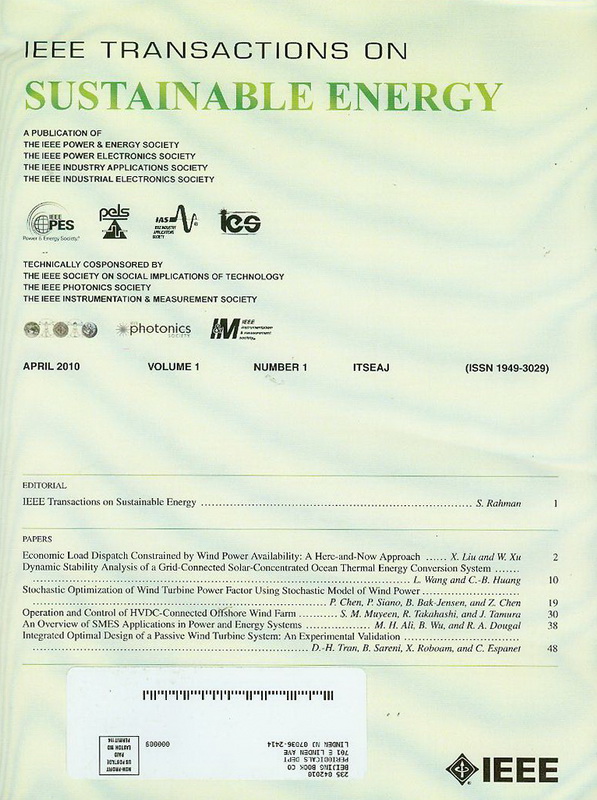Torsional Vibration Analysis of Virtual-Synchronous-Controlled DFIG-Based Wind Turbines
IF 10
1区 工程技术
Q1 ENERGY & FUELS
引用次数: 0
Abstract
The deployment of inertia control in wind turbines (WTs) is required by grid operators to support system frequency stability, while its addition also strengthens the dynamic coupling of WT's mechanical system with the electrical gird, potentially exacerbating torsional vibrations in drivetrains. Such side effect has been reported for the supplementary inertia control in the current grid-following (GFL) control frame, while for its alternative, i.e., the so-called virtual inertia control, this effect has rarely been concerned. To fill this gap, this article conducts a comprehensive study on the torsional stability for virtual-synchronous-controlled (VSynC) DFIG-based WTs. A reduced-order small-signal model considering different wind speed operating regions is firstly proposed. Then, how the paths of different controls, such as virtual inertia control, pitching control, etc., affecting the torsional mechanical/electrical torque are sorted out, and correlated loop shaping on torsional damping are investigated in detail. Through a comparative analysis with GFL scheme, we confirm that VSynC-DFIG suffers more sever torsional stability challenges due to its curtailed electrical damping contribution. Furthermore, we identify the operating conditions that are prone to instability and reveal the mechanisms by which critical control factors impact stability. Finally, hardware-in-the-loop simulations are conducted to validate the correctness of the analyses.虚拟同步控制dfig型风力发电机组扭振分析
电网运营商需要在风力涡轮机(WTs)中部署惯性控制,以支持系统的频率稳定性,同时它的增加也加强了WT机械系统与电网的动态耦合,可能会加剧传动系统的扭转振动。对于当前电网跟随控制框架中的补充惯性控制,已经报道了这种副作用,而对于其替代方案,即所谓的虚拟惯性控制,则很少关注这种副作用。为了填补这一空白,本文对基于虚拟同步控制(VSynC) dfig的WTs扭转稳定性进行了全面的研究。首先提出了考虑不同风速工况区域的降阶小信号模型。然后,梳理了虚拟惯性控制、俯仰控制等不同控制方式对扭转机电转矩的影响路径,并详细研究了相关环形对扭转阻尼的影响。通过与GFL方案的对比分析,我们证实了VSynC-DFIG由于其电阻尼贡献的减少而受到更严重的扭转稳定性挑战。此外,我们确定了容易不稳定的操作条件,并揭示了关键控制因素影响稳定性的机制。最后,进行了硬件在环仿真,验证了分析的正确性。
本文章由计算机程序翻译,如有差异,请以英文原文为准。
求助全文
约1分钟内获得全文
求助全文
来源期刊

IEEE Transactions on Sustainable Energy
ENERGY & FUELS-ENGINEERING, ELECTRICAL & ELECTRONIC
CiteScore
21.40
自引率
5.70%
发文量
215
审稿时长
5 months
期刊介绍:
The IEEE Transactions on Sustainable Energy serves as a pivotal platform for sharing groundbreaking research findings on sustainable energy systems, with a focus on their seamless integration into power transmission and/or distribution grids. The journal showcases original research spanning the design, implementation, grid-integration, and control of sustainable energy technologies and systems. Additionally, the Transactions warmly welcomes manuscripts addressing the design, implementation, and evaluation of power systems influenced by sustainable energy systems and devices.
 求助内容:
求助内容: 应助结果提醒方式:
应助结果提醒方式:


